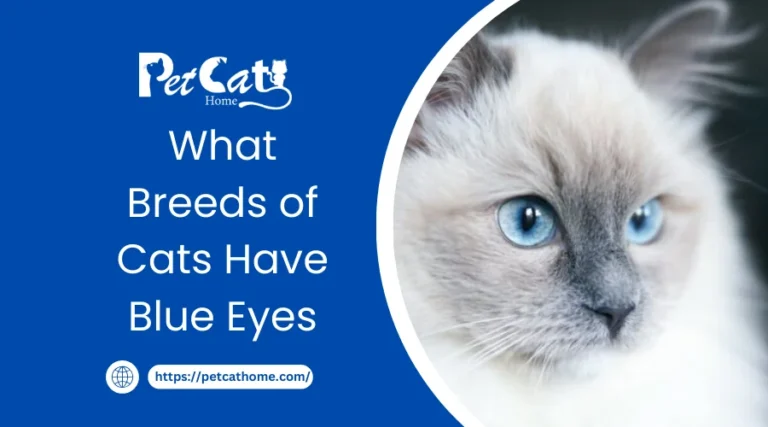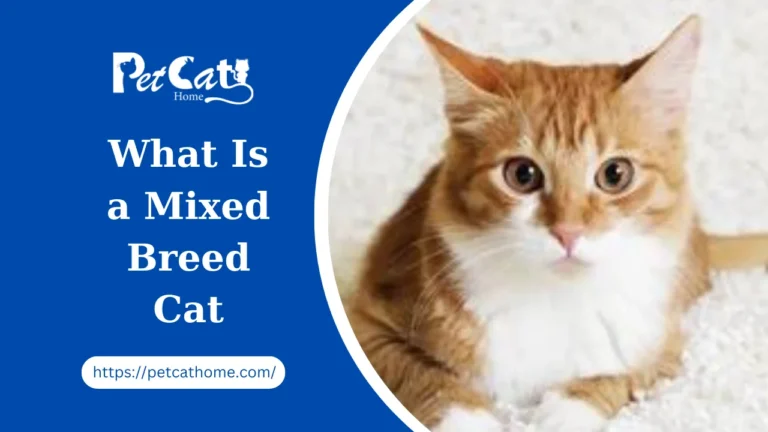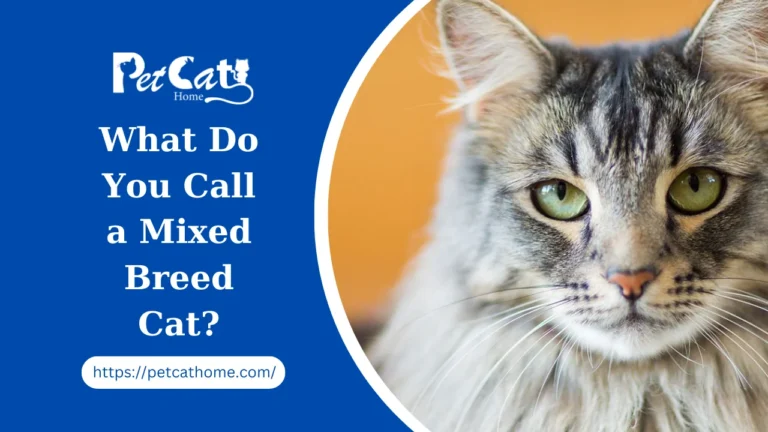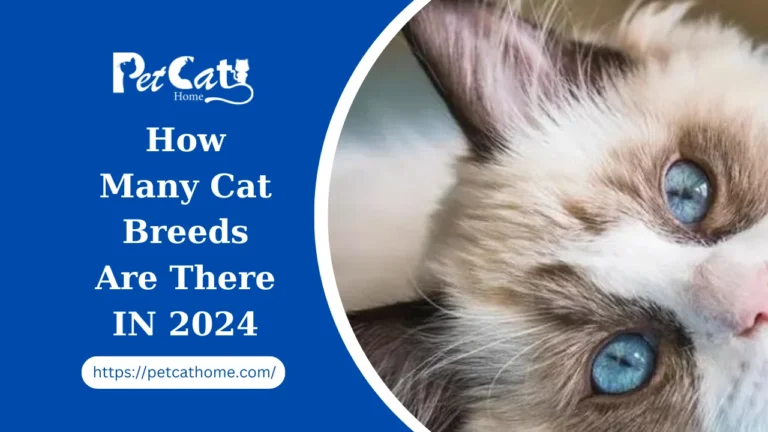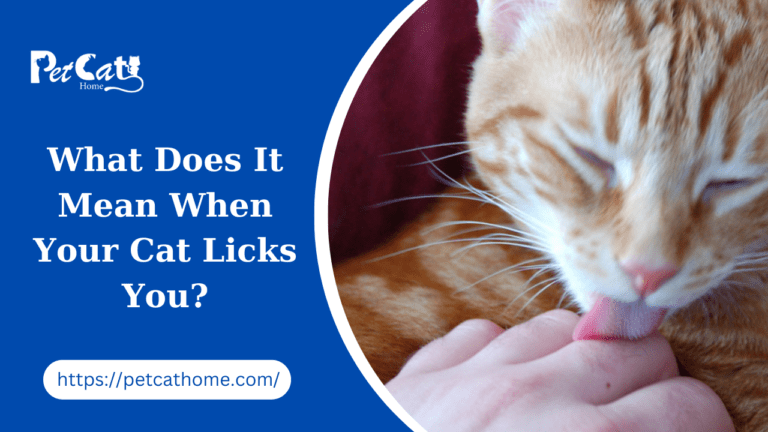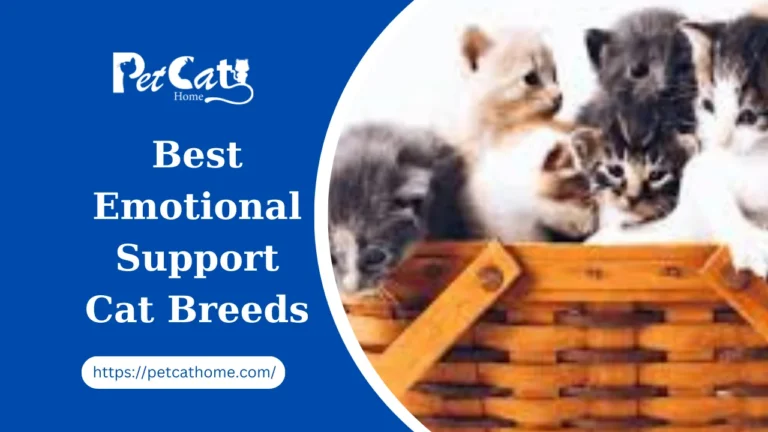What Do You Call a Mixed Breed Cat
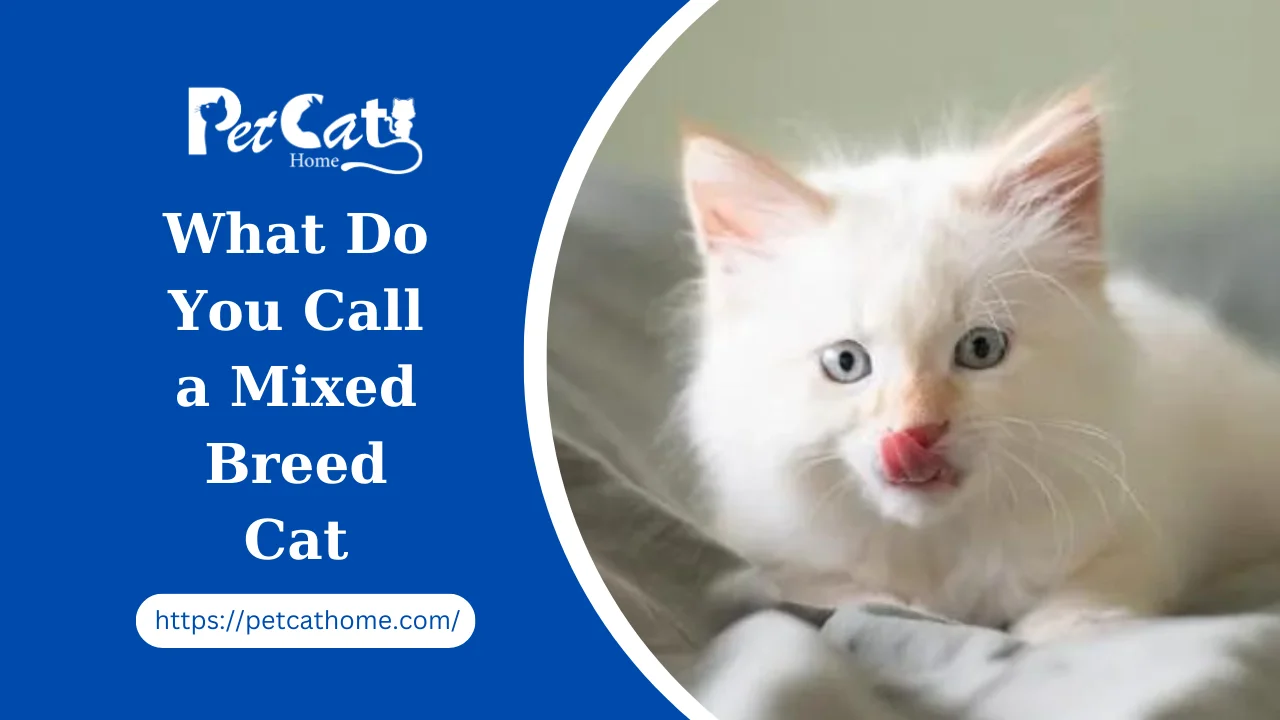
The phrase “mixed breed cat” has become more and more common among both pet owners and cat lovers in recent years. These unusual and endearing animals enthrall us with their varied personalities and looks. Let’s take a closer look at mixed-breed cats and learn about their history, traits, benefits, and happiness in homes.
A. What a Mixed Breed Cat Is
A cat with mixed breed ancestry sometimes called a “moggy” or “domestic shorthair/longhair,” is a feline that is the offspring of two cats of different breeds.
B. The Prevalence of Cats of Mixed Breeds
In a society that values originality, mixed-breed cats have grown in popularity because of their distinctive characteristics and the growing trend of adopting rather than purchasing.
Origin and Genetics
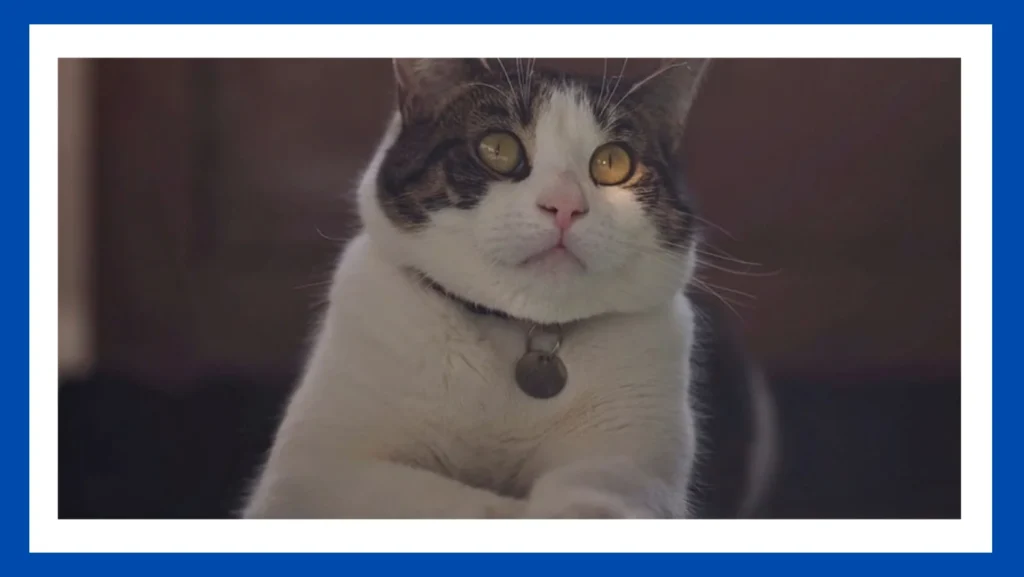
A. History of Crossbreeding
The history of mixed-breed cats begins in the prehistoric era when cats roamed freely and mixed with other breeds. This spontaneous mating produced a variety of feline lineages over time.
B. Cats of Mixed Breeds Have Genetic Diversity
Mixed-breed cats have more genetic diversity, which frequently contributes to their good health, than purebred cats, who may have genetic health problems because of smaller gene pools.
Identifying Mixed Breed Cats
A. Anatomy
A mixed breed cat can be identified by looking at its physical characteristics, which can include different body forms, patterns, and combinations of fur colors.
B. Characteristics of Behavior
Mixed-breed cats are wonderful companions because they exhibit a variety of behavioral traits, from playfulness to intelligence.
C. The Value of Genealogical Research
Although it’s not required, studying a cat’s genealogy can provide owners valuable understanding of their feline companion.
Popular Mixed Breeds
A. Bengal Mix
Bengal mix dogs, who are distinguished by their eye-catching spotted coat patterns, give off a wild vibe and bring an exotic element to homes.
B. Mixed Siamese
When the grace of Siamese cats is blended with the grace of other breeds, the result is cats with glossy, vibrant coats and stunning blue almond-shaped eyes.
C. Coon Mix Maine
The magnificent Maine Coon hybrid is a magnificent addition to any home because it has the enormous stature and tufted ears of its purebred cousin.
Advantages of Mixed Breed Cats
A. Health Advantages
Hybrid vigor is typically advantageous to mixed-breed cats and can lead to improved general health and longer lifespans.
B. Distinctive Individuals
Every mixed-breed cat has a unique personality that combines characteristics from several breeds to create a unique friend.
C. Flexibility
Mixed-breed cats are adaptable due to their wide background, which makes them suitable for a variety of living situations.
Challenges and Misconceptions
A. Myths Regarding Cats of Mixed Breeds
Mixed-breed cats have numerous benefits, but they can also be the target of myths about their temperament and general health.
B. Overcoming Caregiving Challenges
To provide mixed-breed cats with the best care possible and ensure their happiness and health, these misconceptions must be acknowledged and addressed.
Choosing a Mixed Breed Cat
A. Adoption Factors
Many mixed-breed cats are available at shelters or through reliable breeders, and adopting one can be a rewarding experience.
B. Conscientious Breeding Methods
If a particular mix cat is of interest to you, ethical breeding methods advance the health and welfare of the participating cats.
Caring for a Mixed Breed Cat
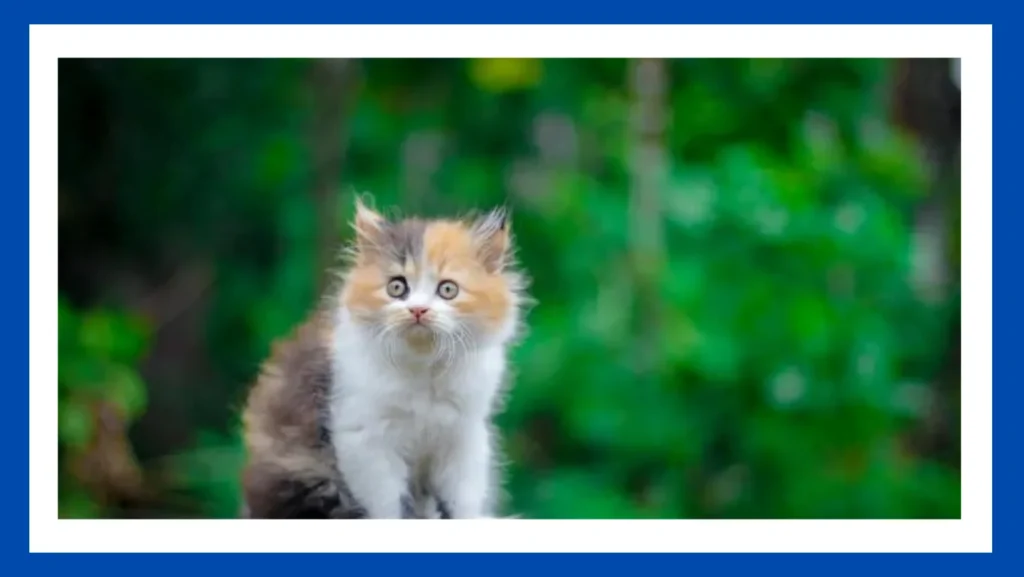
A. Dietary Guidelines
Keeping your cat healthy and happy requires feeding it a balanced diet that is specific to its needs.
B. Physical Activity & Mental Stimulation
A happy and contented mixed breed cat can be obtained by providing mental stimulation activities and regular play.
C. Continual Veterinary Treatment
Frequent veterinary examinations are essential to track the cat’s health and quickly handle any possible problems.
Stories of Mixed Breed Cat Owners
A. Individual Experiences
The joys of owning these feline companions are further highlighted by hearing from owners of mixed-breed cats about their endearing and unique experiences.
B. The Contentment of Owning a Bi-Racial Feline
Mixed-breed cats and their owners have an unmatched bond of love and affection that produces priceless moments and enduring memories.
Mixed Breed Cats in Popular Culture
A. Well-known Characteristics of Mixed Breed Cats
Mixed-breed cats have made a lasting impression on popular culture by playing a variety of famous roles in both literature and film.
B. Effect on Social Media
Social media has developed into a forum for displaying the cute behaviors of mixed-breed cats, who have gained a lot of attention and affection.
Trends in Mixed Breed Cat Adoption
A. Varying Your Preferences
Preferences for these endearing feline friends are shifting as people become more aware of the advantages of adopting mixed-breed cats.
B. Rescue Organizations’ Role
B. The Significance of Rescue Groups Rescue groups are indispensable in encouraging the adoption of mixed-breed cats by allowing them to find a caring and permanent home.
Future Outlook
A. Greater Understanding and Gratitude
Mixed-breed cats have bright futures ahead of them as acceptance and understanding grow, debunking misconceptions and highlighting special traits.
B. Possible Advances in the Breeding of Mixed Breed Cats
Improvements in breeding techniques could also help people appreciate and value mixed-breed cats more, which would be beneficial for their welfare.
Mixed Breed Cats: What Are They Called?
Cat enthusiasts commonly own mixed-breed cats. These hybrid cats have distinct and varied traits as a result of their breed mixing. Mixed-breed cats are also a great choice for cat adopters because they are frequently encountered in animal shelters and rescues.
Mixed-breed cats are not required to follow any particular breed standard, in contrast to purebred cats. This implies that they can differ widely in terms of both temperament and appearance. For instance, different mixed-breed cats may have different coat patterns, longer fur, or shorter fur.
Mixed-breed cats can have a wide range of characteristics, from lively and playful to relaxed and easygoing.
All things considered, mixed-breed cats are a great choice for people seeking a special and endearing companion. Their unique personality and variety of traits make them excellent companions for any feline enthusiast.
What is a Mixed Breed Cat Called?
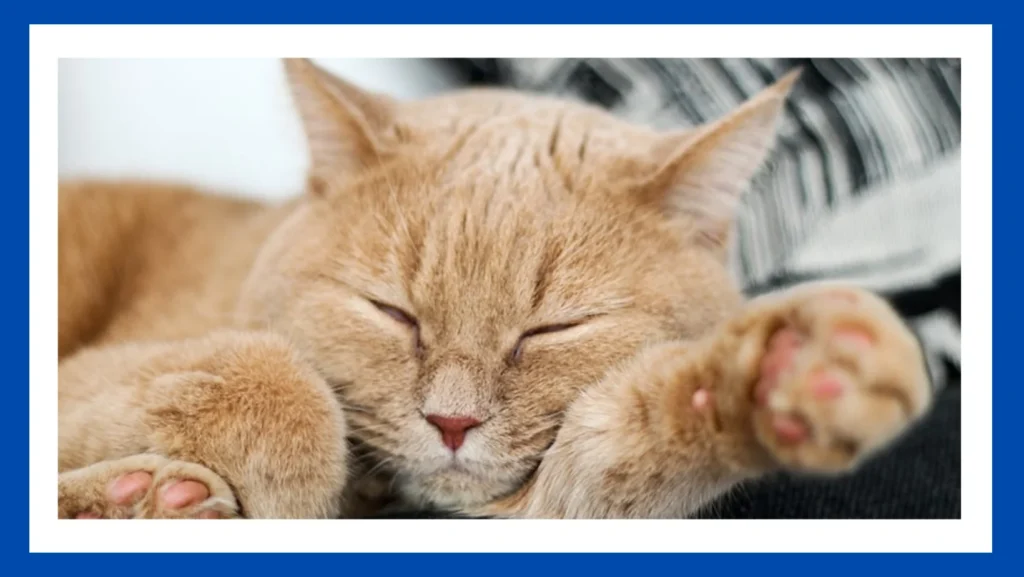
Domestic shorthair cats, sometimes referred to as mixed breed cats, are not descended from purebred cats. Rather, they arise from the mating of a pedigree cat with a non-purebred cat or of two or more distinct breeds.
Common Names for Mixed Breed Cats
Names for mixed-breed cats vary based on the area, culture, and even the cat’s physical characteristics. Mixed-breed cats go by many common names, including:
- Domestic Shorthair: This is a quite common spelling for mixed-breed cats in the United States. It is a general phrase for any cats, regardless of breed, that have short hair.
- Moggie: This is a British sense for mixed-breed cats. It is a loving term for cats with mixed or unknown heritage, and it comes from the word “mongrel.”
- Alley Cat: This is the term used to describe street-roving cats without a particular breed. Cats of mixed breeds are frequently referred to by it.
- Housecat: This is a term employed to describe dogs that live indoors and have no identified breed. Cats of mixed breeds are frequently referred to by it.
Regional Variations in Naming Mixed Breed Cats
Depending on the area, mixed-breed cats go by different names. For instance, mixed-breed cats are frequently referred to as “Domestic Shorthairs” or “Moggies” in Australia and New Zealand. Mixed-breed cats are referred to as “Hauskatzen,” or “house cats,” in Germany.
In certain cultures, mixed-breed cats hold great significance and are given unique names. For instance, mixed-breed cats are known as “Suphalak” in Thailand and are associated with good fortune. Mixed-breed cats are referred to as “Mikeneko” in Japan and are lucky charms.
In conclusion, the names given to mixed-breed cats vary based on the area and culture. Even if they might not belong to a particular breed, they are nevertheless cherished pets who give their owners affection and company.
What is a Mixed Breed Cat?
Defining a Mixed Breed Cat
A cat with parents from different breeds or lineages is referred to as a mixed breed cat, sometimes called a domestic shorthair or longhair. These cats’ mixed or unknown heritage means they are not regarded as purebred cats.
Mixed-breed cats have distinct features that incorporate the properties of both of their parents, whereas purebred cats are bred for certain traits and characteristics.
Characteristics of a Mixed-Breed Cat
Cats of mixed breeds can have a wide range of sizes, shapes, and colors. Their coat patterns vary from solid to spotted, and they can have long or short hair. Because of their more varied genetic makeup than purebred cats, mixed breed cats typically have fewer health issues. This is one advantage of owning one of these cats.
Cats of mixed breeds are likewise renowned for having amiable and loving dispositions. They are frequently characterized as gregarious, lively, and inquisitive. Families that have kids and other pets will love having them as companions.
Mixed-breed cats have an average lifespan of 12 to 20 years, depending on their general health and level of care. For this reason, it’s crucial to give them a balanced diet, frequent exercise, and veterinarian examinations to guarantee a long and healthy life.
In general, mixed-breed cats are a great option for anyone looking for a special and devoted friend. Even though they might not have the same expected attributes as purebred cats, they nevertheless have special qualities that make them a great asset to any home.
Benefits of Owning a Mixed Breed Cat
Health Benefits
When it comes to health issues, mixed-breed cats often have less than purebred cats. This is so that the risk of inherited health problems is decreased due to the genetic diversity found in mixed breeds.
Mixed-breed cats also have stronger immune systems, which reduces their susceptibility to some diseases. Additionally, mixed-breed cats are less prone to experience health problems unique to their breed, such as hip dysplasia in some cat breeds.
Personality Benefits
Cats of mixed breeds are renowned for having distinct personalities. They become intelligent, loving, and lively cats by inheriting features from both parents. Additionally, they are less likely to exhibit behavioral problems that purebred cats are known for, including aggression or nervousness.
Cats of mixed breeds may adapt to a variety of surroundings and are frequently friendlier with humans and other pets.
A mixed-breed cat’s distinct personality and reduced health issues are just two advantages of owning one. Additionally, mixed-breed cats are a fantastic option for anyone searching for a pleasant and healthy feline companion due to their broad genetic composition.
Considerations when Owning a Mixed Breed Cat
Potential owners of mixed-breed cats need to think about a few key factors before making the decision. Mixed-breed cats can make lovely companions, but owners need to be aware of some potential health risks, as well as the need for socialization, training, and grooming.
Potential Health Issues
A possible disadvantage of keeping a mixed-breed cat is that it can be more susceptible than purebred cats to certain health problems. This is because purebred cats are bred for particular features and attributes, which may result in genetic health issues.
Contrarily, the genetic pool of mixed-breed cats is larger, which may help lower the likelihood of hereditary health problems.
Mixed-breed cats may still be susceptible to some health issues, though, including dental, obesity, and urinary tract issues.
Training and Socialization
Mixed-breed cats need to be socialized and trained like any other cat to be well-mannered and content. Given that mixed-breed cats may exhibit more personality traits than purebred cats, this is particularly crucial for them. From an early age, owners should socialize their mixed-breed cat with both people and other cats, and they should also provide them with lots of opportunities for play and exercise.
Grooming Needs
The variety of coat types and lengths that mixed-breed cats might have can have an impact on their grooming requirements. While some mixed-breed cats only need occasional grooming, others may need regular brushing to avoid matting and tangles. Researching their cat’s coat type and maintenance requirements is advised, and owners should be ready to give frequent grooming.
For cat enthusiasts, having a mixed-breed cat can be a fulfilling experience overall. However, prospective owners should be informed about the possible health risks, the need for socialization and training, and the grooming requirements associated with having a mixed-breed cat. Owners may guarantee their mixed-breed cat is a happy and healthy pet by giving it the right care and attention.
What do you call a cat that is a mixed breed?
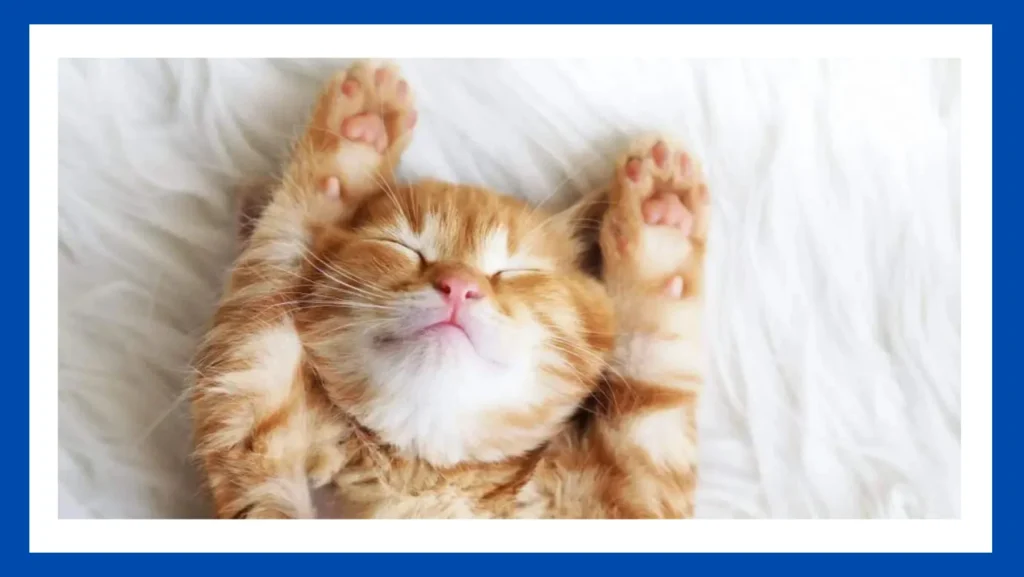
It is deceptive to refer to a cat as “mixed breed” since it suggests that it is the offspring of two separate kinds of cats. This is inaccurate because, as a more accurate description, we are talking about randomly bred cats.
A superb show moggy! Photo copyright Helmi Flick. This is a tabby. It is possible to show moggies at cat shows.
Two useful tags. To view the articles, click either: Cat Hazards | Toxic to cats
“Random bred cat” refers to a cat that is the child of two cats of different breeds or parents who mated randomly. The progeny is a randomly bred cat. Because there is no human control over the breeding process or human intervention in the selection of the cats to breed, the breeding is random. A cat that has been randomly bred is called a moggie, which is another spelling for “moggy.” I think the preferred spelling is the latter.
You refer to a mixed-breed cat as a moggy, or, to put it more politely, as a “random bred cat,” in response to the query in the title.
Random bred (free-living) tabby cat.
Show cats can be produced by random breeding, and many do. They are randomly bred display cats rather than purebred, pedigreed ones, and occasionally they are just as glamorous because, well, why not? Some stunning cats that were bred at random, like the one below, were captured on camera at an American cat show by a professional cat photographer.
Calico random bred with no tail. Photo: copyright Helmi Flick
It may seem little, but occasionally cats who are randomly bred are more closely related to their genuine ancestry than cats that are strictly bred. For instance, because their genetic makeup is more closely connected with the origin of Turkish Angora, the Turkish Angora of today is more accurately a Turkish Angora than the American ones that have undergone selective breeding. These are Turkish street cat moggies, the real deal Turkish Angoras. See the cat below, a real Turkish Angora.
The Top 10 Mixed Cat Breeds in the World
There are various reasons why not every cat owner chooses a purebred cat. Adopters of kittens and mature felines from shelters are unable to confirm the breed’s purity, and buying a pedigreed kitty is typically quite costly.
Although the majority of cat owners have mixed-breed cats in their homes, this does not mean that they are not picky about their favorite breed. These cats sometimes referred to as moggy or alley cats, can be just as elegant, lovely, affectionate, and entertaining as their counterparts with blue blood.
Because the mixture of two or more diverse breeds assists in removing the defective gene pool responsible for the propensity to certain frequent feline health problems, certain mixed breeds appear healthier than their identical purebred counterparts.
Here is a list of the top 20 mixed cat breeds:
1. Tuxedo Cats
Thanks to its refined look and graceful posture, this is the most sought-after mixed-breed feline. Cats with tuxedo-like markings on their black and white coats are known as tuxedo cats.
The world’s most well-liked mixed-breed cat is this one. Short to medium hair lengths are the norm for tuxedos. A real tuxedo cat has a white blaze across its breast and a black coat with white socks.
There exist multiple mixed-breed combinations with the capacity to yield tuxedo cats. This is a description of the colors and markings, not a breed. Domestic short-haired or domestic medium-headed cats make up the majority of tuxedo cats.
2. Domestic Short Hair
Cats with short hair that are domestic belong to the moggy category. They are typically a crossbreed of several feline breeds, and it is unknown where they originated. They can come in any color, markings, and size.
The same holds for their body and head shapes. A mother can give birth to a clutch of kittens which will differ in appearance since they are a blend of unknown breeds.
Some may have appearances that are similar to various purebred cats. The majority of domestic shorthair cats are robust, larger-framed, and have robust muscles. The paws and skull are rounded in shape.
Except for their propensity to overeat are become obese, they are among the most active cats and generally resistant to illness. The lifespan is 15–17 years on average. They must be groomed regularly. These cats have an animated, playful, and lively demeanor.
3. Domestic Medium Hair
Domestic cats with medium hair often have a medium build and are muscular. Their personalities might be communicative, gentle, independent, and playful, or lively, active, and hyperactive. The lifespan is 15–17 years on average.
This breed is similar to the domestic short-hair breed, however, it has longer hair due to the presence of distinct genetic markers. The fur is unique and rather uncommon among cats. When they are kittens, they like rough play and can become annoying, therefore this should be avoided.
They are diverse in terms of color and pattern, and they have a range of head and body shapes. When properly socialized as kittens, they typically get along nicely with kids and other pets.
4. Tabby Cats
Tabbys are easily recognized by their characteristic markings, which include swirling patterns, dots, and lines. They are not characterized by a particular pattern. They are available in an array of hues and color combinations.
It is conceivable for mixed-breed tabby cats to have different markings on their feet and chest than the typical orange, brown, or gray color. The sides of classic tabbies are patterned with swirls and stripes that resemble targets.
Mackintosh The legs and tail of tabby cats are covered with distinctly striped rings. The chest’s front stripes resemble a necklace. The darker patches, which cover the stomach in double lines, are distributed throughout. Spotted tabby may be descended from both American bobtail and Ocicat breeds. The hair of the ticked tabby has unique color bands. They look to have hair that is both salt and pepper as a result.
5. Maine Coon Cat mix
The majority of Maine Coon cats that are crossed with domestic medium-haired cats will have a large body, short tail, and hair that falls in the middle of medium and long ranges.
A side face, white stockings and chest, and tabby stripes are further common characteristics of the mix. The most prevalent hues are silver, gray, black, and white, however, due to the impure bloodlines of unknown origins, any combination of these colors is possible.
The expected lifespan is between 12 and 15 years. There might be a silky, soft, light undercoat to this blend. The weight will be 9-12 pounds. Get ready for continuous shedding and frequent brushing to prevent hairballs in your cat. Regularly vacuuming will also be required.
6. Siamese mix
Worldwide, Siamese mixed breed cats are very well-liked. These cats are not Siamese by blood; rather, they are unknown mixed-breed cats with Siamese characteristics. Alley cats with these traits are thought to have some Siamese genetics in their heritage. The lifespan is 12 to 15 years on average.
Along with a lighter body color, this cat will also have a darker shading on its ears, tail, feet, and face. The hues could be blue, chocolate, lilac, or seal. The weight will typically range from 8 to 12 pounds, although due to unclear genetics, this could vary.
This cat will tend to be intelligent, inquisitive, talkative, and demanding due to its Siamese characteristics. This cat will probably talk a lot. They work best under strict supervision with kids and other pets.
Siamese cats are independent creatures that express affection when the mood strikes. The disposition may grow more mellow when exhibited as a mixed breed, but each case must be considered individually. Siamese mixes are followers in general.
They have a history of lingering underfoot and following their owners about the house. Additionally, they are well known for attempting to assist you with any task you are working on, so be ready for this cat to obstruct you when you least expect it.
7. Birman mix
Because of their appeal when the Birman bloodlines are dominant, Birman mix cats are in high demand. Their distinctive color patterns, which might be seal, speckled, lilac, chocolate, or blue, help to identify them.
It weighs between six and ten pounds and is sized between medium and large. The hair of Birmans is long and has a smooth, silky texture. The lifespan is 14–15 years on average. Birmans have piercing sapphire blue eyes.
The coat color can have a hint of mistiness in gold. Although they are vivacious and energetic cats, Birmans are also calm and peaceful animals. They make ideal family pets for the reason of their loyalty and amiable nature. They are particularly good for kiddos and other family members.
8. Ragdoll mix
This cat’s physical attributes are what drive up its demand as a home pet. It has a cute face with large eyes that are rounded in some areas. The demeanor is gentle, affectionate, and fun.
This devoted cat will give you as much love as you can take since it genuinely wants human company. It won’t keep anybody up at night because it isn’t a vocal person. Ragdoll mixes are distinguished by their luxurious coats, which are smooth, velvety, and silky.
The color possibilities comprise red, lilac, cream, caramel, and blue including color point, inflected, and bi-color patterns. If the ragdoll features are dominant, they will require continual brushing because they shed frequently. The lifespan is twelve to seventeen years. Large cats and ragdolls typically weigh eight to fifteen pounds.
9. Himalayan Mix
The long, velvety coat of Himalayan mixes is the reason for their popularity. It’s a gorgeous cat that exudes grace and pride in who she is. Himalayans radiate luxury and it’s evident from their looks that they enjoy spoiling others.
Compared to purebreds, mixed breeds are less prone to experience health problems. They are also lovely cats who are energetic, loving, and cuddly. The lifespan is nine to fifteen years on average.
Blue, chocolate, cream, crimson, and lilac are the colors. Spot and seal point patterns are present. This breed will shed frequently, and to keep appealing coats free of kinks and mats, continuous brushing is required. The usual weight of Himalayan mixes ranges from 7 to 11 pounds, although they might weigh greater based on the breeds they are combined with.
10. Munchkin mix
Finding a Munchkin mix cat can be somewhat challenging. Finding a purebred munchkin is already difficult, but some mixtures do exist. Munchkins’ bodies are unlike any other.
Due to a genetic abnormality, they have small legs, giving them the appearance of being a dwarf type. The colors are black, brown, blue, fawn, exotic, chocolate, cinnamon and cream.
Tri-color, tabby, striped tabby, mitted, marbled, and color point are just a few of the patterns. The length of the coat might vary, but it should be smooth and luxurious. When fully grown, munchkins are a petite cat breed that weighs between 4 and 8 pounds.
Huge eyes and compassionate emotions adorn their faces. Twelve to fifteen years is the usual lifespan. Prepare for an aggressive breed of cat that munchkins tend to become active and fierce. They don’t tend to do anything except lounge around the house. This cat gets along well with kids and other household pets, which makes it an excellent choice for a family pet. It is a reserved cat that only lets its voice be heard when necessary.
FAQs
A. What are the advantages of having a mixed breed cat?
Genetic diversity is typically advantageous for mixed breed cats since it can result in improved general health and distinctive personalities.
B. How can I identify if my cat is a mixed breed?
Understanding a cat’s ancestry can be gained by looking at its physical attributes and, if accessible, by studying its pedigree.
C. Are mixed breed cats healthier than purebreds?
Cats of mixed breeds may have hybrid vigor, which can improve general health in comparison to some purebred cats.
D. Where can I adopt a mixed breed cat?
A mixed breed cat can be adopted from shelters and trustworthy breeders, who can provide it with a loving forever home.
Conclusion
To sum up, mixed-breed cats are a great addition to any home, offering personality, variety, and happiness. Adopting from a shelter or going with a particular mix, these feline buddies provide unfathomable levels of love and friendship.
